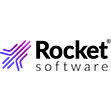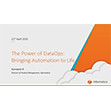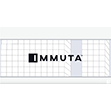

Embedded analytics specialist Logi Analytics Inc. is acquiring Jinfonet Software, developer of a Java-based architecture used to embed interactive dashboards and reports into web and other enterprise applications.
Terms of the transaction were not disclosed.
The acquisition announced Tuesday (Feb. 12) combines the two leading embedded analytics vendors. Jinfonet’s flagship JReport platform is a Java reporting system designed to deliver integrated business intelligence. JReport can be embedded into applications via a set of APIs. The reports and dashboards also provide interactive data visualization.
Jinfonet, Rockville, Md., said its Java reporting engine runs on in-memory “cubes” and distributed cluster servers.
“Applications are increasingly being driven by analytics,” said Logi Analytics CEO Steven Schneider. “By acquiring Jinfonet, we are creating the dominant provider exclusively focused on embedded analytics.”
The combination also would deliver new workflow capabilities along with the ability to write-back to a database. The buyer also touted Jinfonet’s “pixel-perfect” operational reporting while adding predictive analytics and security integration.
“Embedding analytics is all about contextualized data insights and how we can improve existing applications to enhance workforce efficiency from within the enterprise,” Dean Yao, Jinfonet’s director of marketing, told Datanami in 2017.
Logi Analytics, headquartered just across the Potomac River in Mclean, Va., has been among the leaders in embedding data visualization and other analytics tools into web and mobile applications.
According to a study commissioned by Logi Analytics last fall, embedded analytics accounts for more than half the value in enterprise applications. The company said the survey findings reveal that application developers are attempting to move up the value chain by offering new embedded features such as data visualizations, interactive dashboards and predictive analytics.
Embedded tools also are touted as accelerating the steady shift toward self-service analytics, helping users find their own new data sources, for example. That, in turn, frees developers to concentrate on core applications.
“We will continue investing in the embedded analytics space to bring innovations to application teams that are building mission-critical applications,” Schneider said in announcing the acquisition.
Recent items:
Top 5 Reasons to Embed Analytics in Your Enterprise Apps
App Developers Embedding More Analytics
Embedded Analytics Goes Mainstream
August 1, 2025
- MIT: New Algorithms Enable Efficient Machine Learning with Symmetric Data
- Micron Expands Storage Portfolio with PCIe Gen6 and 122TB SSDs for AI Workloads
- DataRobot Announces Agent Workforce Platform Built with NVIDIA
- Menlo Ventures Report: Enterprise LLM Spend Reaches $8.4B as Anthropic Overtakes OpenAI
- Confluent Announces $200M Investment Across Its Global Partner Ecosystem
- Zilliz Sets New Industry Standard with VDBBench 1.0 for Benchmarking Real Vector Database Production Workloads
- Symmetry Systems CSO Releases Book on Data Security Strategies for the AI Era
July 31, 2025
- Google DeepMind’s AlphaEarth Model Aims to Transform Climate and Land Monitoring
- Elsevier Launches Reaxys AI Search for Natural Language Chemistry Queries
- Boomi Brings Sovereign Data Integration to Australia
- Scality Releases Open Source COSI and CSI Drivers to Streamline File Storage Provisioning
- Informatica Boosts AI Capabilities with Latest Intelligent Data Management Cloud Platform Release
- Helix 2.0 Gives Global Enterprises the Fastest Path to AI Agents on a Private GenAI Stack
- Anaconda Raises Over $150M in Series C Funding to Power AI for the Enterprise
- Supermicro Open Storage Summit Showcases the Impact of AI Workloads on Storage
- Observe Closes $156M Series C as Enterprises Shift to AI-Powered Observability at Scale
- Stack Overflow’s 2025 Developer Survey Reveals Trust in AI at an All Time Low
July 30, 2025
- Scaling the Knowledge Graph Behind Wikipedia
- LinkedIn Introduces Northguard, Its Replacement for Kafka
- Top 10 Big Data Technologies to Watch in the Second Half of 2025
- Rethinking Risk: The Role of Selective Retrieval in Data Lake Strategies
- Apache Sedona: Putting the ‘Where’ In Big Data
- Rethinking AI-Ready Data with Semantic Layers
- What Are Reasoning Models and Why You Should Care
- Top-Down or Bottom-Up Data Model Design: Which is Best?
- What Is MosaicML, and Why Is Databricks Buying It For $1.3B?
- LakeFS Nabs $20M to Build ‘Git for Big Data’
- More Features…
- Supabase’s $200M Raise Signals Big Ambitions
- Mathematica Helps Crack Zodiac Killer’s Code
- Promethium Wants to Make Self Service Data Work at AI Scale
- Solidigm Celebrates World’s Largest SSD with ‘122 Day’
- AI Is Making Us Dumber, MIT Researchers Find
- Toloka Expands Data Labeling Service
- The Top Five Data Labeling Firms According to Everest Group
- With $20M in Seed Funding, Datafy Advances Autonomous Cloud Storage Optimization
- Ryft Raises $8M to Help Companies Manage Their Own Data Without Relying on Vendors
- AWS Launches S3 Vectors
- More News In Brief…
- Seagate Unveils IronWolf Pro 24TB Hard Drive for SMBs and Enterprises
- Gartner Predicts 40% of Generative AI Solutions Will Be Multimodal By 2027
- OpenText Launches Cloud Editions 25.3 with AI, Cloud, and Cybersecurity Enhancements
- TigerGraph Secures Strategic Investment to Advance Enterprise AI and Graph Analytics
- Promethium Introduces 1st Agentic Platform Purpose-Built to Deliver Self-Service Data at AI Scale
- StarTree Adds Real-Time Iceberg Support for AI and Customer Apps
- Gathr.ai Unveils Data Warehouse Intelligence
- Databricks Announces Data Intelligence Platform for Communications
- Graphwise Launches GraphDB 11 to Bridge LLMs and Enterprise Knowledge Graphs
- Informatica Named a Leader in the 2024 Gartner Magic Quadrant for Data Quality Solutions 16 Consecutive Times
- More This Just In…



























